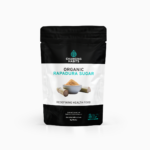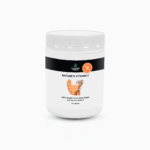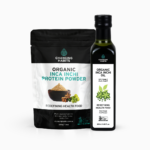Interesting findings in the US on how people are becoming more aware of the food they eat and how it relates to disease. Even though the figures are promising I was still amazed that only 50 percent even bother to read what is in their food.
US consumers reading labels more
More than half of consumers in the United States often read the food label when buying a product for the first time. These consumers are also increasingly aware of the link between diet and heart disease.
These are among the key findings that the US Food and Drug Administration (FDA) has released from its latest Health and Diet Survey, a snapshot of the nation’s dietary habits.
FDA released findings from the 2008 telephone survey of more than 2,500 adults in every state this week.
Among the highlights of survey findings in regard to how diet affects health: More consumers know of the relationship between diet and heart disease. Ninety-one per cent knew of this link, an 8 per cent jump from 2002. In addition, 62 per cent of consumers mentioned fats as a factor related to heart disease, compared to 53 per cent in 2002.
Eighty-one per cent of consumers know that certain foods or drinks may help prevent heart disease or heart attacks. This result showed no change from 2002. While fruits and vegetables were most frequently linked with reducing heart disease, fewer people made this link in 2008 than in 2002.
Consumers’ awareness that trans fats in the diet may raise the risk of heart disease nearly doubled over just four years, from 32 per cent in 2004 to 62 per cent.
Correct identification that omega 3 fatty acids may lower the risk of heart disease increased, from 31 per cent in 2004 to 52 per cent in 2008.
Knowledge that saturated fat may raise the risk of heart disease was stable: it was 74 percent in 2004 and 73 percent in 2008.
Findings in regard to food labels include: More than half (54 per cent) of consumers said they read a product’s label the first time they buy the product. That’s a 10 per cent increase from 2002.
Among those who in 2008 reported they read the nutrition label the first time they buy a product, two-thirds use the label “often” to check how high or low a food is in calories and in substances such as salt, vitamins, and fat, while 55 per cent “often” use the label to get a general idea of the food’s nutritional content.
Forty-six per cent “often” use the calorie information on the label, while 34 per cent rarely or never use the calorie information.
Thirty-eight percent of consumers said they use nutrient content claims (such as “low fat,” “high fiber,” and “cholesterol-free”) “often”; 34 per cent answered “sometimes.”
When asked if they refer to the label claim of “0 grams of trans fat,” 31 per cent said “often” and 36 per cent said “sometimes.”
The survey found differing degrees of trust about claims found on food labels. For example, 41 per cent of consumers believe that all or most of claims such as “low fat,” “high fibre,” or “cholesterol free” are accurate, while 56 per cent believe that some or none of them are accurate.
Source: FDA
Source: FoodWeek Online







0 Comments